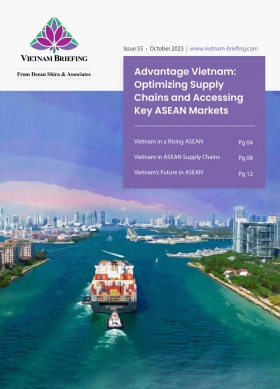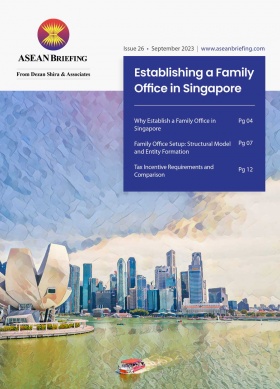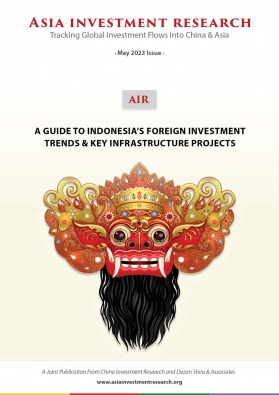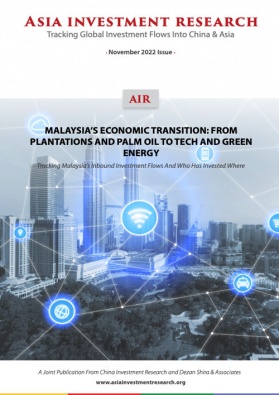Singapore and Malaysia Plan Joint Special Economic Zone in Johor State
Singapore and Malaysia are partnering to create a special economic zone (SEZ) in Malaysia’s Johor state (JS-SEZ), adjacent to the Singaporean border. The joint effort is designed to foster stronger business connections and improved connectivity between the two countries, as the region combats a global economic slowdown. An MOU was signed between the leaders of the two countries on January 11 with a full-fledged agreement expected to be signed at the end of 2024.
The JS-SEZ is expected to attract more multinational firms into Johor as part of their risk-management strategy caused by U.S.-China trade tensions.
READ: Special Economic Zones in ASEAN: Opportunities for US Investors
Background
In late October, the Malaysian Prime Minister, Anwar Ibrahim, conducted a two-day leaders’ retreat with Singaporean Prime Minister Lee Hsien Loong in Singapore. The 10th Singapore-Malaysia Leaders’ Retreat marked a significant milestone in their bilateral relations, which the two prime ministers aimed to leverage for mutual economic benefits. The occasion was also their first such bilateral interaction after the pandemic.
Key goals
The planned SEZ seeks to enhance the movement of goods and people across the Johor-Singapore Causeway, while also bolstering the overall ecosystem of Iskandar Malaysia and Singapore. Established in 2006, Iskandar Malaysia is the main southern development corridor in Johor.
[The Johor-Singapore Special Economic Zone] will tap into the complementary strengths of both countries to foster economic connectivity by improving cross-border flows of goods, investments, and people. – Joint Statement, 10th Singapore-Malaysia Leaders’ Retreat
Location advantage
The Johor-Singapore Special Economic Zone is set to be established within Malaysia’s Iskandar region (formerly the Iskandar Development Region and South Johor Economic Region), with the government actively promoting it as an attractive investment destination aimed at bolstering the electronics, healthcare, and financial industries as well as business-related services.
Malaysia currently has five investment corridors (a new type of SEZ): the East Coast Economic Region (ECER), Iskandar Regional Development Authority (IRDA) for Iskandar Malaysia in Southern Johor, and the North Corridor Implementation Authority (NCIA) for the North Corridor Economic Region (NCER).
Meanwhile, the sectors of focus in Malaysia’s existing development corridors are:
- East Coast Economic Region: Tourism, oil and gas, manufacturing, agriculture, and education
- Sabah Development Corridor: Agro-based industry, tourism, logistics, and manufacturing
- Sarawak Corridor of Renewable Energy: Resource-based industry, energy, tourism
- Norther Corridor Economic Region: Modern agriculture, manufacturing and design, tourism, logistics, education, and health
Improving transport linkages
Singapore and Malaysia have started construction on a light-rail link connecting Singapore and Johor Baru. The rail is expected to reach a capacity of 10,000 passengers per hour and significantly reduce the congestion on the current Johor-Singapore causeway – one of the world’s busiest land crossings. The US$2.2 billion project is expected to be completed in 2026.
Major trade and business partners
In 2022, Singapore and Malaysia ranked as each other’s second-largest trading partners, as their bilateral trade volume reached US$83.53 billion.
Additionally, during the same year, Singapore stood out as one of Malaysia’s primary sources of foreign direct investment (FDI), contributing 8.3 percent to Malaysia’s total investments for that period.
The right incentives will be key to the success of the JS-SEZ
The success of the JS-SEZ will depend on the type of incentives issued by the economic zone and how these policies are implemented. Often, special economic zones issue incentives that are not aligned with the requirements of businesses.
The leaders of both countries have mentioned that there will be special tax incentives as well as bonded warehouses. Further, both governments are exploring passport-free travel for travel between the two countries under the JS-SEZ. This will be facilitated through a QR-based clearance system qt land checkpoints on both borders.
Webinar – Hong Kong vs. Singapore: A Comparison of Current Business Environments, Key Industries, and Regional Hub Potentia
Thursday, April 25, 2024 | 12:00 PM New York / 6:00 PM Brussels
Kyle Freeman, Partner at Dezan Shira & Associates, will compare and contrast Singapore and Hong Kong’s business climates, ease of doing business, key industries, risks, and potential as a regional hub.
About Us
ASEAN Briefing is produced by Dezan Shira & Associates. The firm assists foreign investors throughout Asia and maintains offices throughout ASEAN, including in Singapore, Hanoi, Ho Chi Minh City, and Da Nang in Vietnam, in addition to Jakarta, in Indonesia. We also have partner firms in Malaysia, the Philippines, and Thailand as well as our practices in China and India. Please contact us at asean@dezshira.com or visit our website at www.dezshira.com.









